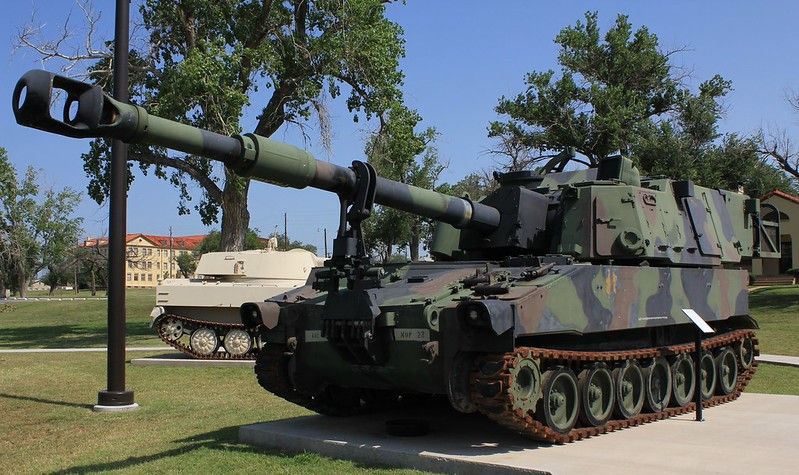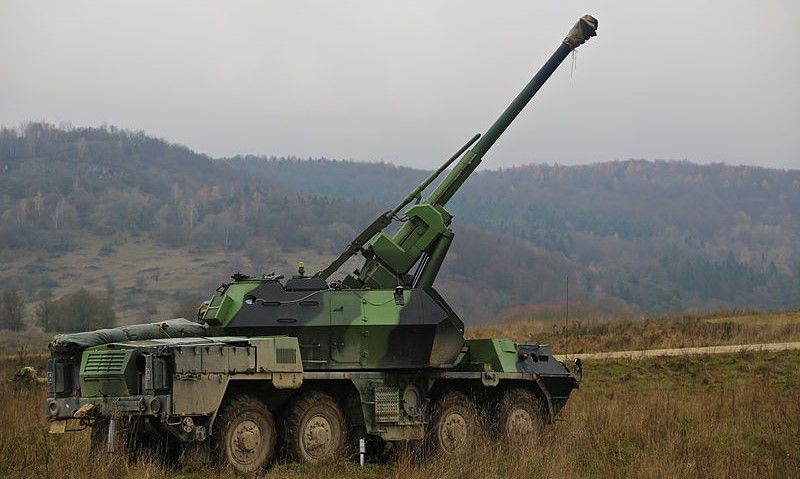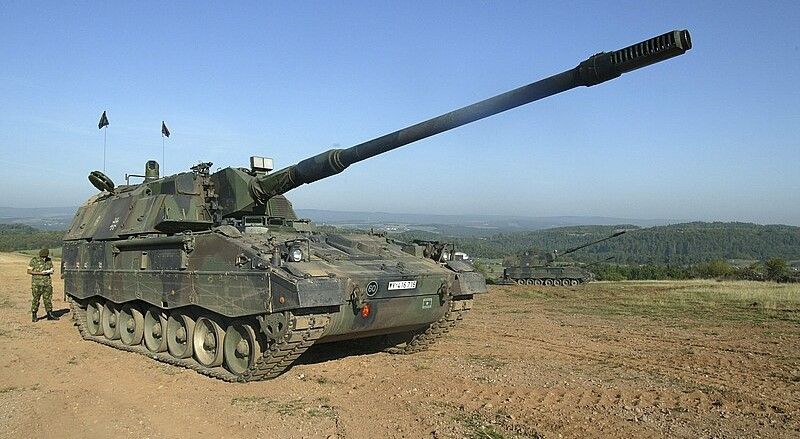Nimble Artillery – A Response to the Drone Threat
More effective drone spotting and counter-battery fire is changing artillery design.

The presence of drones on the battlefields of Ukraine has changed many aspects of how war is fought – especially in how artillery is being used.
Today, eye-in-the-sky drones function as the primary source of target spotting. Furthermore, with shell shortages limiting the ability to saturate an area with bombardment, single artillery rounds are more likely, closely followed by a drone being used for artillery correction.

But military strategists are also observing how drones are increasing the risks posed to artillery from enemy guns.
With a larger number of flying cameras ready to identify and locate an enemy artillery position, counter-battery fire has become far more effective, either from conventional artillery or direct attack from the drones themselves.
The response from military planners is for a far more mobile artillery force.
“Ukrainian use of shoot-and-scoot artillery fire suggests that the future lies in highly mobile artillery, be they tracked or wheeled,” notes Spencer Jones, a senior lecturer in war studies at the University of Wolverhampton in the UK.
The key advantage to placing a gun on the back of a vehicle is speed and agility. This means that a wheeled artillery piece, such as KNDS France’s truck-mounted Caesar howitzer, can get into position, fire multiple rounds, and move off in a matter of minutes.
The effect has been significant in protecting against counter-battery fire. “Around 10% of Caesars in Ukraine had been destroyed by March, compared with almost a third of the tracked 52-caliber armored guns,” states the manufacturer.
“Before the conflict in Ukraine, many gunners around the world thought that for high-intensity warfare, the only serious guns would be tracked armor,” says Guillem Monsonis, the KNDS spokesperson. “The conflict in Ukraine has shown that, on the contrary, the Caesar is not only perfectly suited to high-intensity warfare but also fares better than other types of gun.”

According to Pierre-André Moreau, a former senior weapons engineer for the French Army, the way that drones and loitering tank-busters are changing the battlefield means that conventional armoured artillery “is on the verge of becoming totally obsolete.”
The extended range of modern drones and glide bombs means that even the largest calibre guns are no longer safe, even if placed far behind the front lines. “The game today is not to be spotted, and that’s where Caesar has a huge advantage,” Moreau adds.
Elbit Systems, which makes the Atmos truck-mounted howitzer, also sees the shift in demand away from static or towed guns, stating that there is now a ‘critical need’ for mobility.

“The audacity of the wheeled cannon is the maximum efficiency,” says retired French general and artillery specialist Charles Beaudouin. “You sacrifice nothing in terms of firepower, rate of fire, precision and range, and you’ve got a truck, armored all the same, but which is able to be nimble, which is very stealthy.”
The result has been a rush of orders and manufacturing for more mobile artillery hardware. As Defense News notes, “The past six months hosted a flurry of wheeled-artillery purchases, include Belgium with the Caesar MkII, Brazil picking Atmos, and the U.K. and Germany announcing plans in April to acquire KNDS Deutschland’s RCH 155 based on the eight-wheeled Boxer.”
Meanwhile, Finland’s Patria is looking at ways to adjust its 155mm towed artillery piece so that it can be placed on a wheeled vehicle.
“Ukraine is definitely shaping the towed versus wheeled discussion,” observes Paul Daniels, a defence industry consultant and retired U.S. Army officer who says he is witnessing "an uptick in focus on wheeled, self-propelled howitzers.”
This sea-change will soon have an impact on the battlefield, with Defense News reporting how, “France, Denmark and Ukraine agreed in March to finance 78 additional Caesar systems for Ukraine in 2024, adding to 49 systems already delivered.” Adding that, “KNDS by early April was producing six of the howitzers per month, up from a rate of two before the war, with a target for 12 cannons per month.”
Meanwhile, President Volodymyr Zelenskyy announced in April that Ukraine is now producing ten of its domestically made, 155mm calibre, Bohdana wheeled howitzers every month.

Breaking with a tradition of tracked self-propelled artillery, Russia has also embraced the shift by introducing the Malva wheeled howitzer last year. And while its 152mm gun’s limited range might make it susceptible to attack, the state-owned manufacturer Rostec hopes that its increased manoeuvrability will aid its survival.
The trend towards wheeled guns is also being boosted by their low cost in comparison to their tracked or heavily armoured counterparts.
While this is especially true for Ukraine and Russia who are locked in a war of attrition, the sky-rocketing defence budgets of Western countries are also hoping to gain more value by buying cheaper, low-weight artillery pieces.
Foe example, Germany bought ten tracked Panzerhaubitze 2000s in March 2023 for €18.4 million apiece, while in late 2023 (in a more heated defence market), France was able to purchase 109 Caesar MkII guns for only €3.2 million each.
Additionally, research has shown that operating and maintaining wheeled systems can cost up to 30% less than other artillery systems. This is largely due to the reduced weight, with the Caesar MkII guns measuring 18t compared to a tracked Panzerhaubitze at 57t or a K9 at 47t.

While the need for low-cost will always be present, demand for faster, more nimble artillery is only expected to grow, as the ability to ‘hide’ guns on the battlefield with become almost impossible due to what Gen. James Rainey, the chief of U.S. Army Futures Command, called the ‘absolute saturation’ of sensors.
For this reason, he believes that the future for towed guns is “not bright,” adding that, “There are some very good, wheeled howitzers that are having great effect in a place like Europe where the road systems are pretty mature.”
Despite the near-timeless trench fighting, the war in Ukraine is being driven by technology. The advent of drone weapons and their impact on increasing the effectiveness of counter-battery fire is making speed and manoeuvrability vital.
A factor that, as drone capability improves, is going to continue. Meaning that the switch to wheeled, lightweight artillery pieces is likely to remain an ongoing trend as the defence industry continues to develop.
Photo credit: Wikimedia, Picryl, Flickr, Wikimedia, Wikimedia, & Flickr

